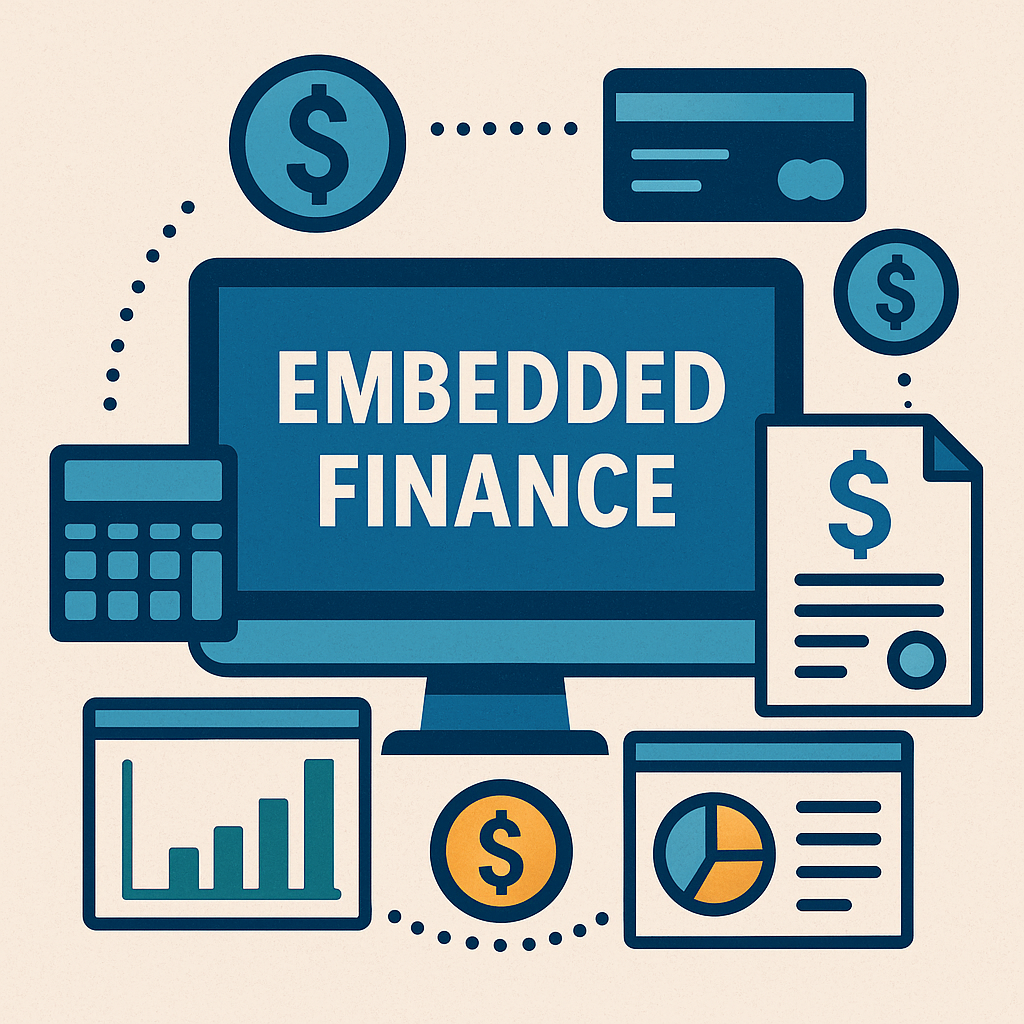From Payments to Lending: 4 Ways Embedded Finance Is Changing Accounting SaaS

Accounting software is no longer merely a tool for recording transactions or generating financial statements. Embedded finance is quietly redefining the sector, allowing platforms such as QuickBooks, Xero, and FreshBooks to act as gateways to a broader range of financial services, from payments and lending to cash management and corporate banking. This convergence of software and finance is not only altering how businesses manage their money but is reshaping the competitive landscape for SaaS providers, investors, and banks alike. As embedded finance gains traction, the question is no longer whether accounting platforms will incorporate these services, but which firms will succeed in leveraging them to dominate the small and medium-sized enterprise market.
1. Embedded Payments: Streamlining Invoicing and Collections
The most mature use case for embedded finance in accounting SaaS is the integration of payments into invoices. Rather than sending an invoice and expecting customers to use external payment portals, modern SaaS tools allow clients to click “Pay Now” inside the accounting interface. This tight coupling of billing and payment can cut days off accounts receivable cycles and drive higher collection rates.
According to a BCG and Adyen study, more than half of vertical independent software vendors in North America in 2025 already offer embedded payments. The same report estimates that in 2024, SaaS providers embedding payments accounted for 36% of SME acquiring revenues, a figure expected to reach 45% by 2028. For accounting SaaS firms, offering payments natively means fewer integrations, fewer reconciliation errors, and a more seamless user experience.
2. Embedded Lending and Buy-Now, Pay-Later (BNPL) Services
The next frontier is credit and installment financing embedded directly within accounting workflows. An accounting platform might offer short-term loans or BNPL options to small business users when customers owe invoices or when purchasing add-ons inside the platform. As financial data flows through the system, underwriting becomes more precise and risks more manageable.
Data suggest this is not just theoretical. SaaS platforms that have embedded finance strategies now generate over 50% of their revenue from financial products in some sectors. Some forecasts indicate that adding embedded lending can multiply platform revenue by 3–4x. For accounting SaaS, the benefit is twofold, users gain convenient access to capital, while the platform captures interest income, fees, or interchange revenue.
3. Embedded Banking and Business Accounts
Beyond payments or loans, accounting platforms can embed full banking services: deposit accounts, digital wallets, corporate cards, and cash management directly inside the interface. In such a model, the SaaS becomes the front end for banking experiences, while licensed financial partners fulfill the regulatory and capital roles.
Research from Accenture shows that embedded finance could capture up to 26% of the SME banking market by 2025. That is a huge slice of revenue traditionally held by incumbent banks. In one white paper, SaaS firms that adopt embedded finance see valuation premiums and growth in multiples versus peers without financial services. For accounting SaaS, that means a shift from pure software vendor to de facto financial services hub.
4. Embedded Cash Flow Tools, Forecasting, and Risk Monitoring
Another powerful use case is embedding cash flow analytics, forecasting, and risk tools that leverage financial activity in real time. Because embedded finance surfaces transaction-level detail, payments, loan draws, and account balances, accounting platforms can layer predictive modules, alerts, or credit risk scoring directly for users.
These tools help small businesses anticipate cash shortfalls, suggest when to draw credit, or warn if a client is slow to pay. In effect, accounting SaaS evolves from a passive recorder of financial events to an active adviser. Many SaaS vendors have reported revenue uplifts of 30–70% after layering embedded finance features. AWS-style platforms are now marketing accounting plus embedded finance as a “financial OS” for SMEs.
Challenges, Adoption, and Market Trends
The transition to embedded finance is promising, but not without obstacles. Regulatory compliance, risk underwriting, capital allocation, and integration complexity are heavy lifts for software firms. Many lack financial services licenses, so they partner with banks or fintechs. This dependency can affect margins and control.
Still, the growth trends are compelling. The global embedded finance market was estimated at USD 108.55 billion in 2024 and is projected to grow to over USD 1,217.37 billion by 2033, a CAGR of about 28.5%. Another report forecasts the market will rise from about USD 146 billion in 2025 to USD 690 billion by 2030, a CAGR of 36.41%. According to Precedence Research, it may even reach USD 1,732.53 billion by 2034. Some other sources estimate a global embedded finance market of USD 7.2 trillion by 2030.
Meanwhile, a BCG / Adyen study suggests more than 80% of the embedded finance market is still up for grabs, especially outside payments. That means SaaS businesses embedding finance now can capture first-mover advantage.
Accounting SaaS is an especially fertile ground for embedded finance adoption. These platforms already hold the data, manage workflows, interact daily with customers, and monitor financial health. Adding embedded finance is not just a product extension, it changes the fundamentals of how value is created and captured.
Conclusion
The rise of embedded finance within accounting SaaS represents a fundamental shift in the dynamics of business finance. Platforms that successfully integrate payments, credit, banking, and real-time cash flow analytics are positioning themselves as indispensable infrastructure for small and medium-sized enterprises, creating a level of customer dependency that transcends traditional software subscriptions. For investors and executives, the implications are clear: the most successful SaaS firms will be those that combine robust financial services with their existing platforms, capturing new revenue streams, enhancing customer retention, and redefining the very notion of what constitutes a financial services provider in the digital era.





